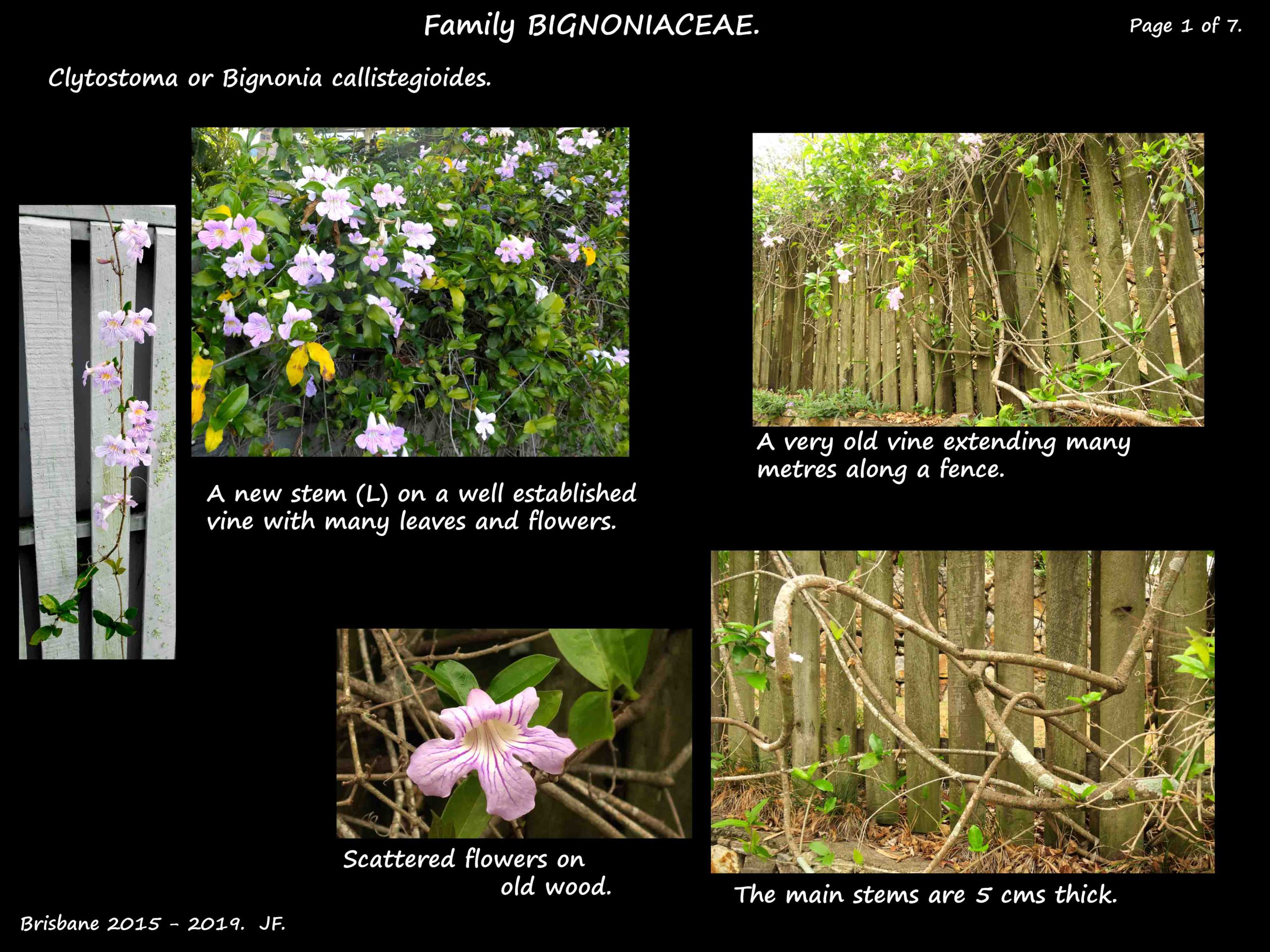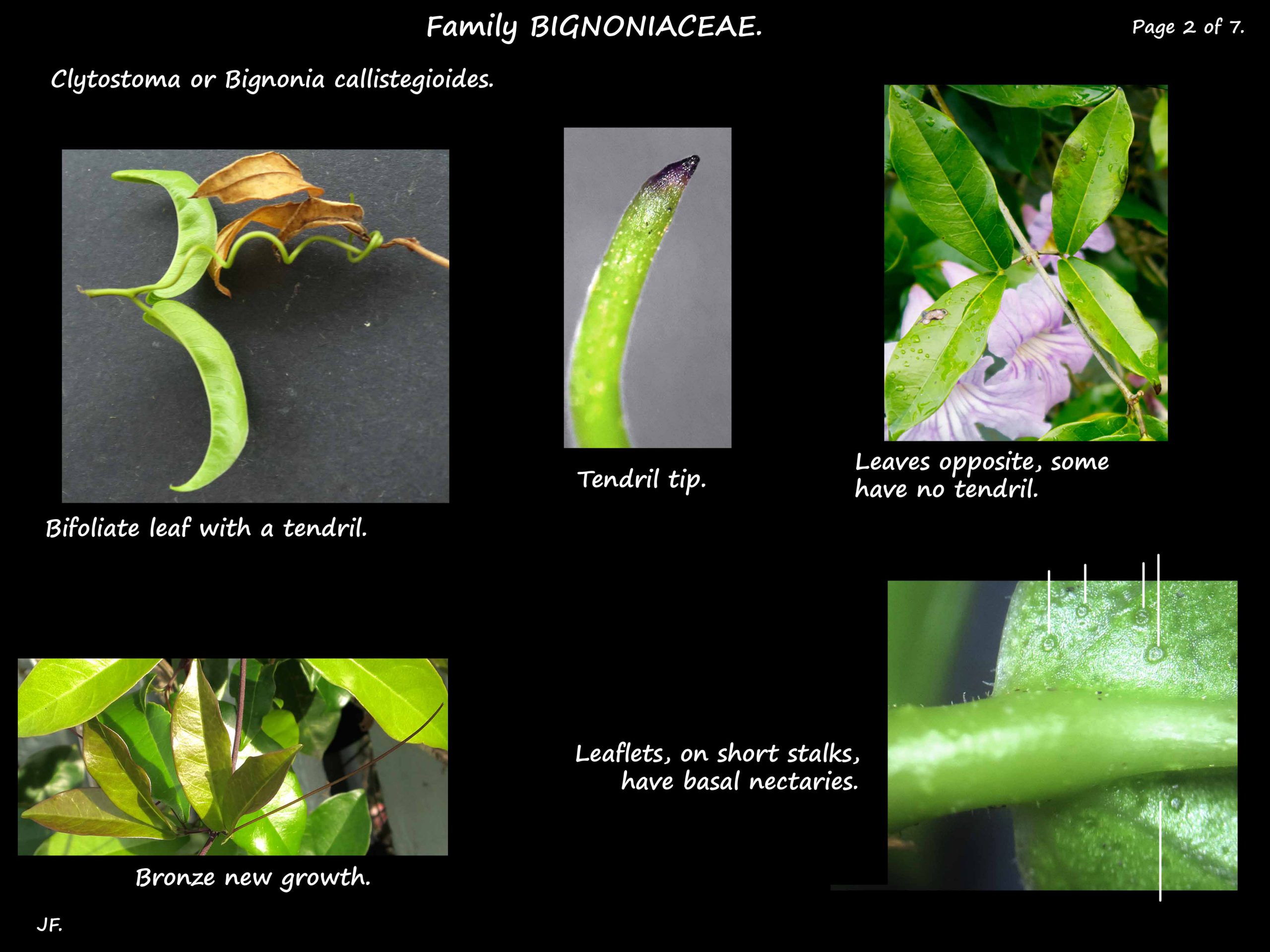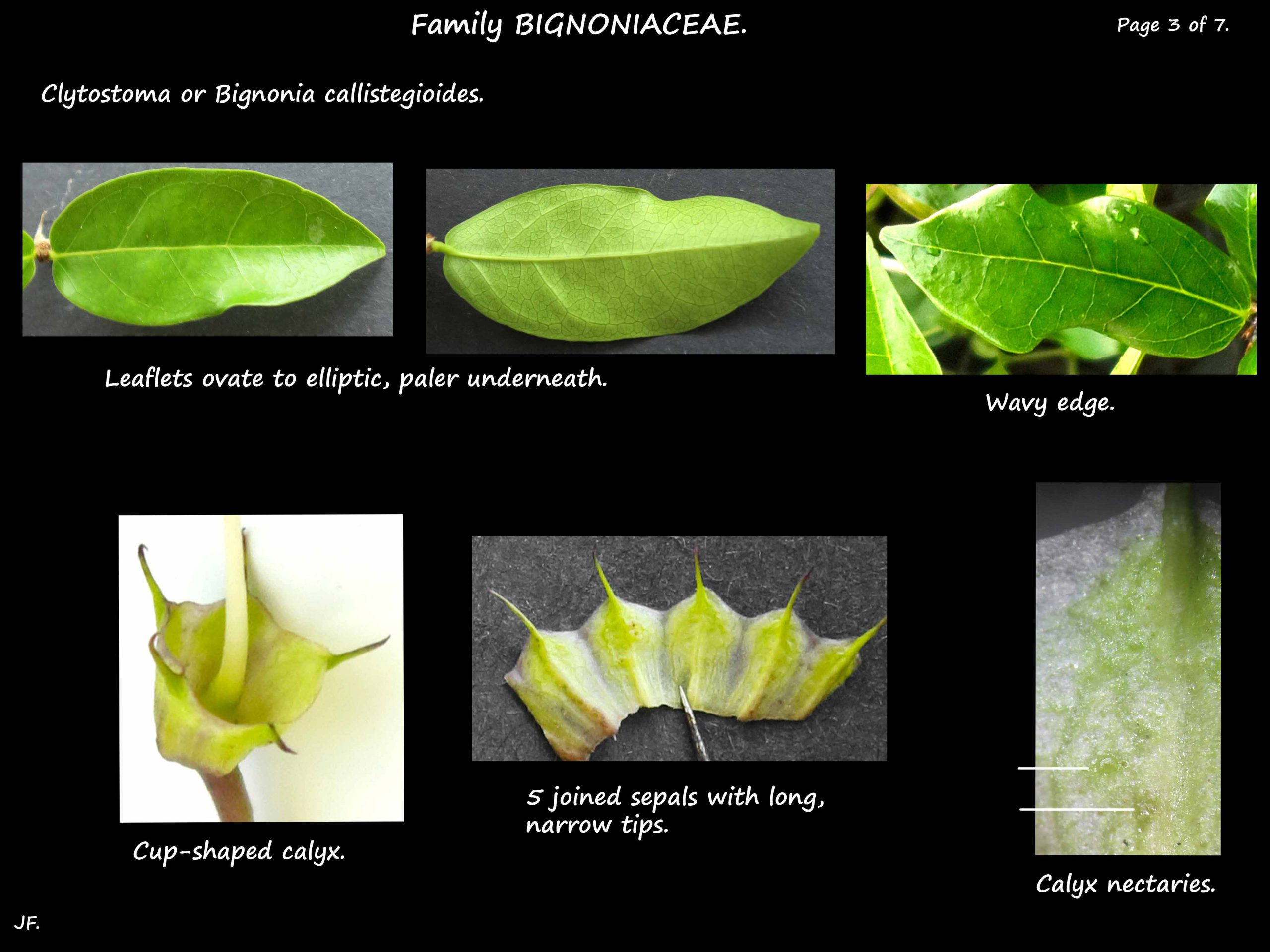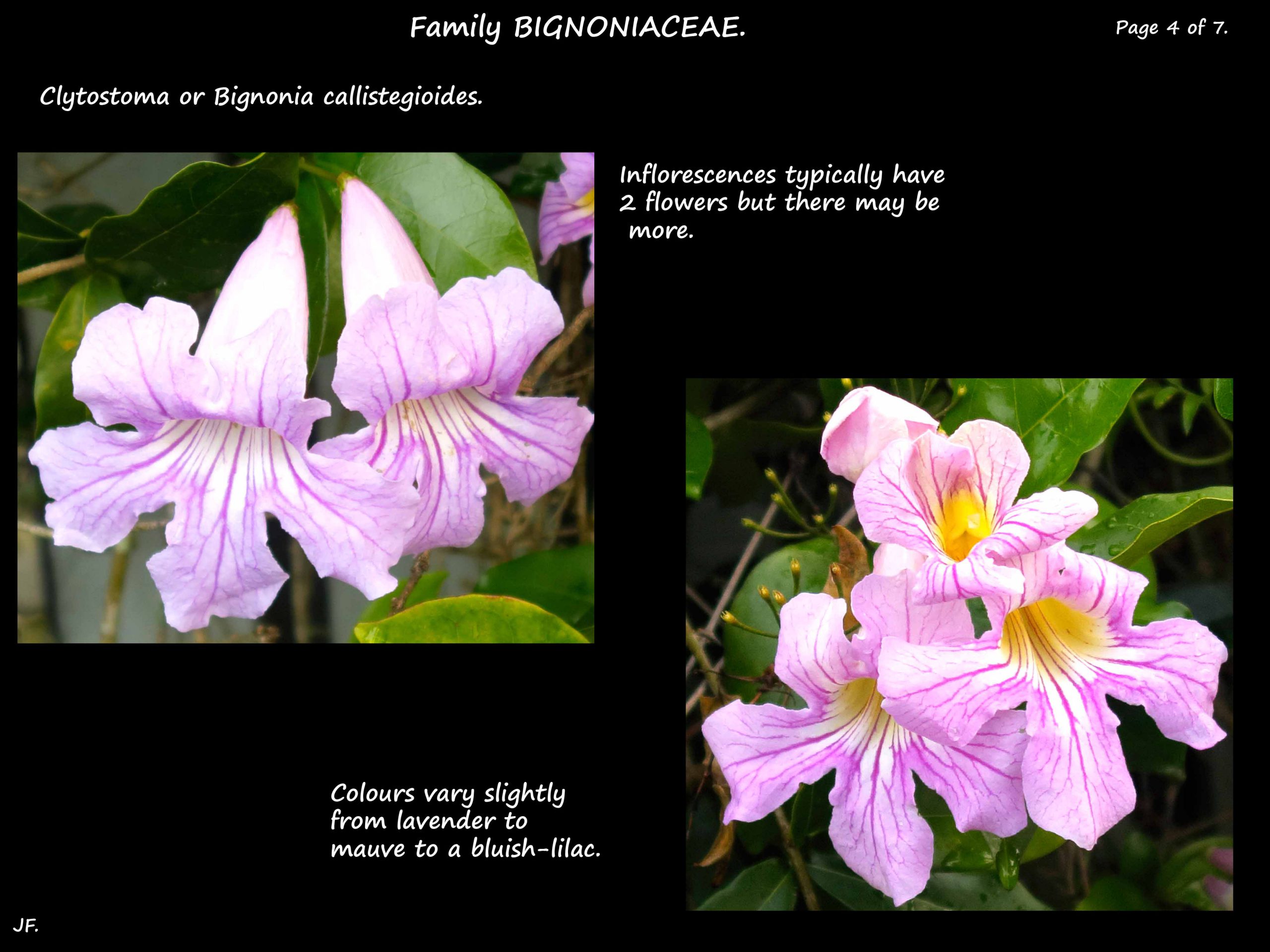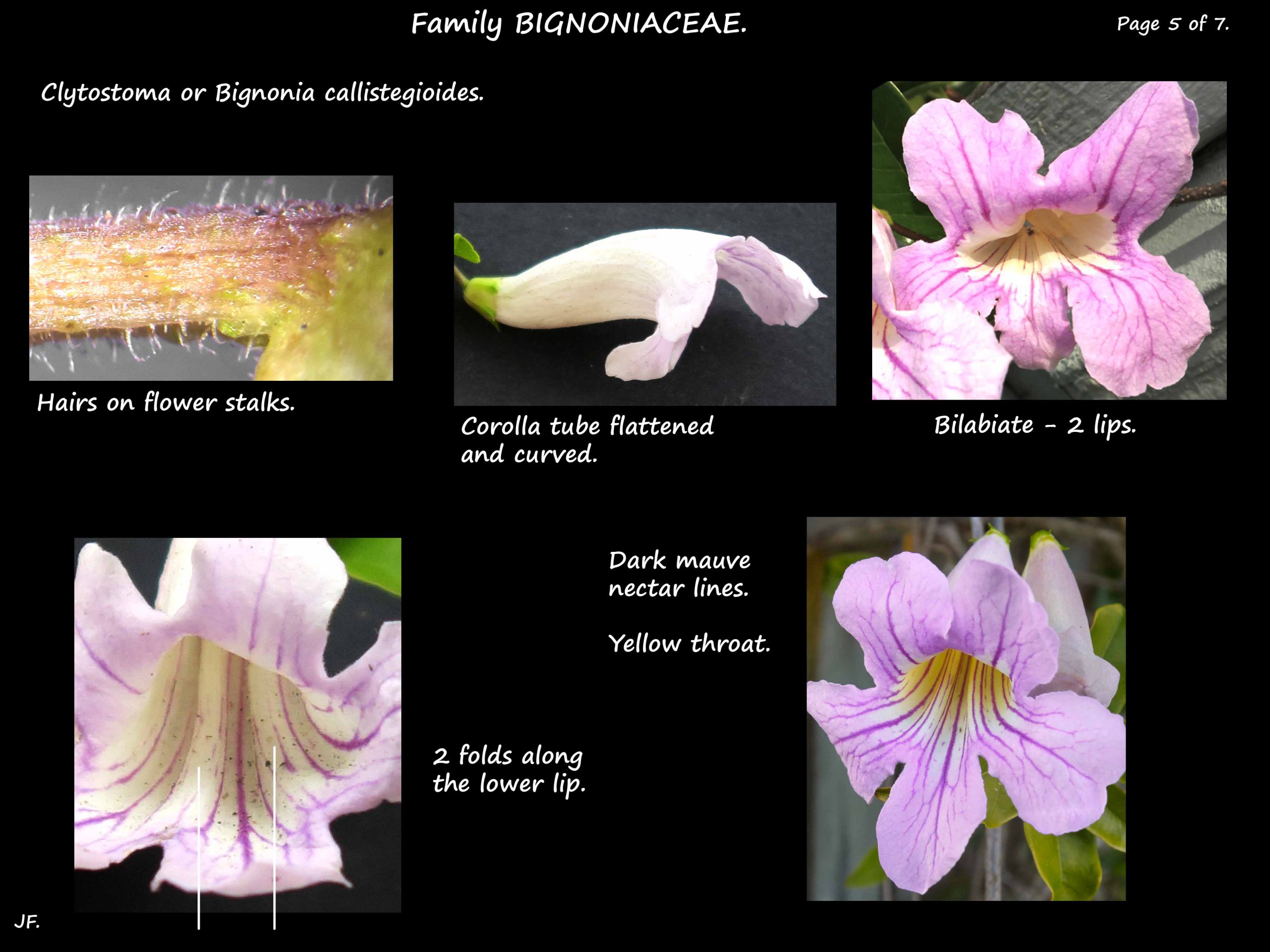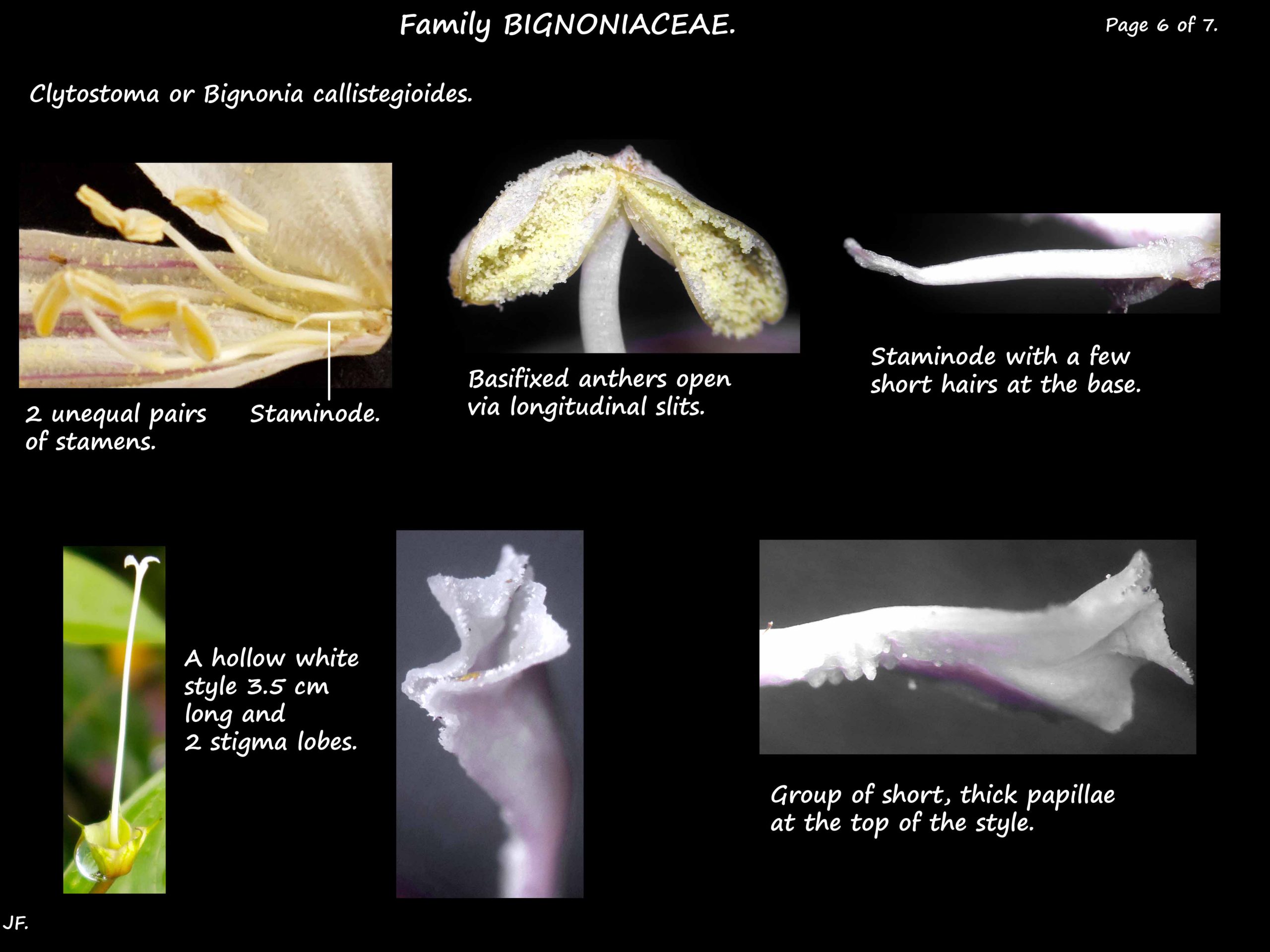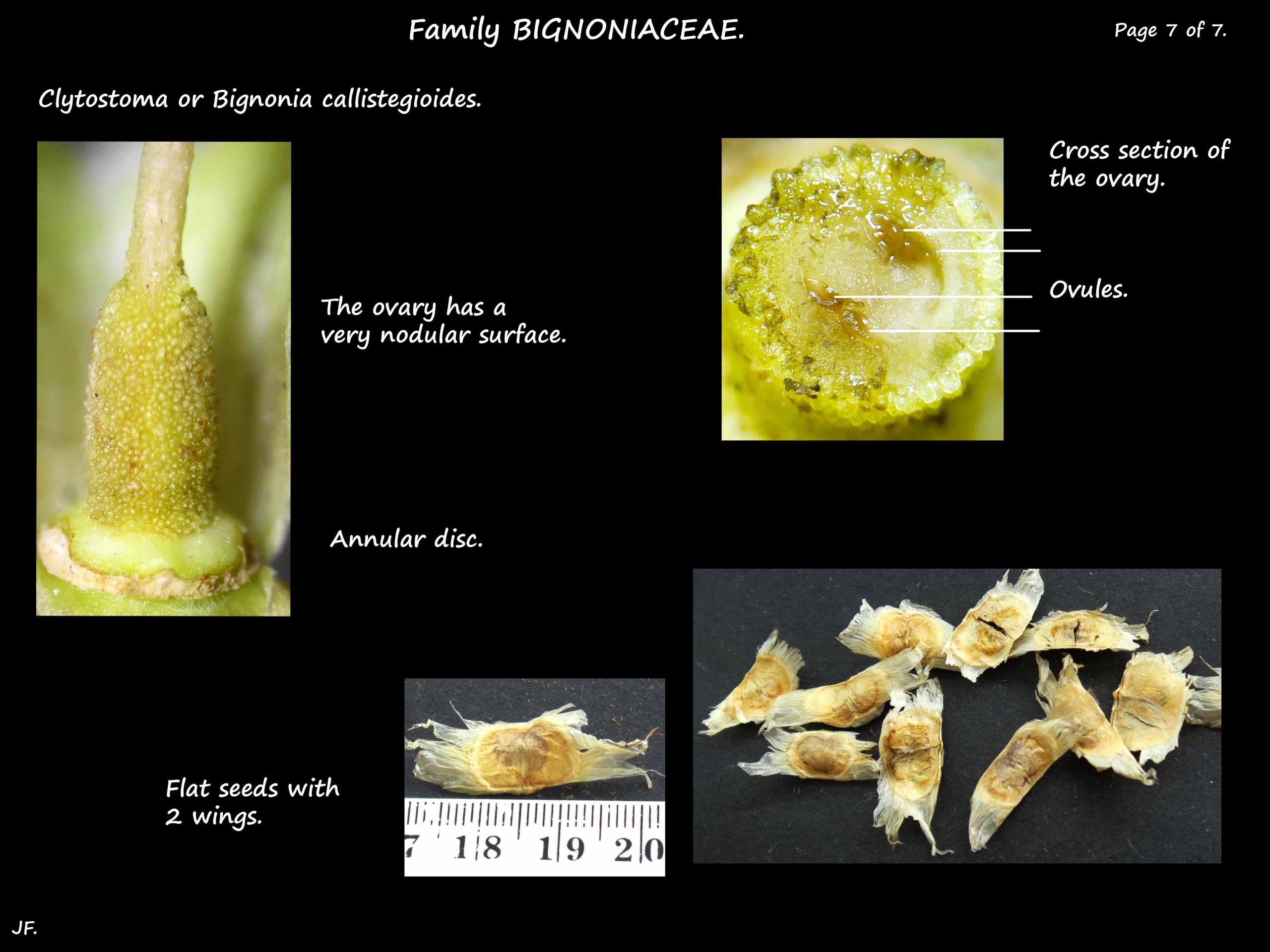Clytostoma callistegioides.
In Family Bignoniaceae it is also known as Bignonia callistegioides.
At various times it has been in the Pandorea, Clytostoma and Bignonia genera.
The Plant List has it as Bignonia but it is still well known as Clytostoma.
Common names include Argentine trumpet vine and Lavender Trumpet Vine.
An evergreen, perennial woody vine with long stems that climbs using tendrils.
It is fast growing and densely covered in bright, glossy, dark green foliage.
The opposite, bifoliate (2 leaflets) leaves are up to 8 – 10 cm long and 4 to 5 cm wide.
Occasionally there is only 1 leaflet.
The leaflets are elliptic to ovate, and have wavy edges.
Petioles are 1 to 2 cm long and the leaflet stalks about 5 mm.
Typically there is a terminal tendril but it is absent on many leaves
as it falls off if it does not attach to something.
Inflorescences, of 2 or more flowers, are mostly terminal.
The calyx is cup or bell-shaped with 5 long, narrow, pointed lobes.
The corolla is trumpet or funnel-shaped with the tubular part about 8 cm long.
The somewhat flattened tube gives a bilabiate appearance to the 5 lobes.
The corolla is mauve, lavender or lilac-blue and fades to a pale pink.
The throat is white to yellow with dark purple lines.
The brown capsules are up to 8 cm long and the seeds are winged.
J.F.
